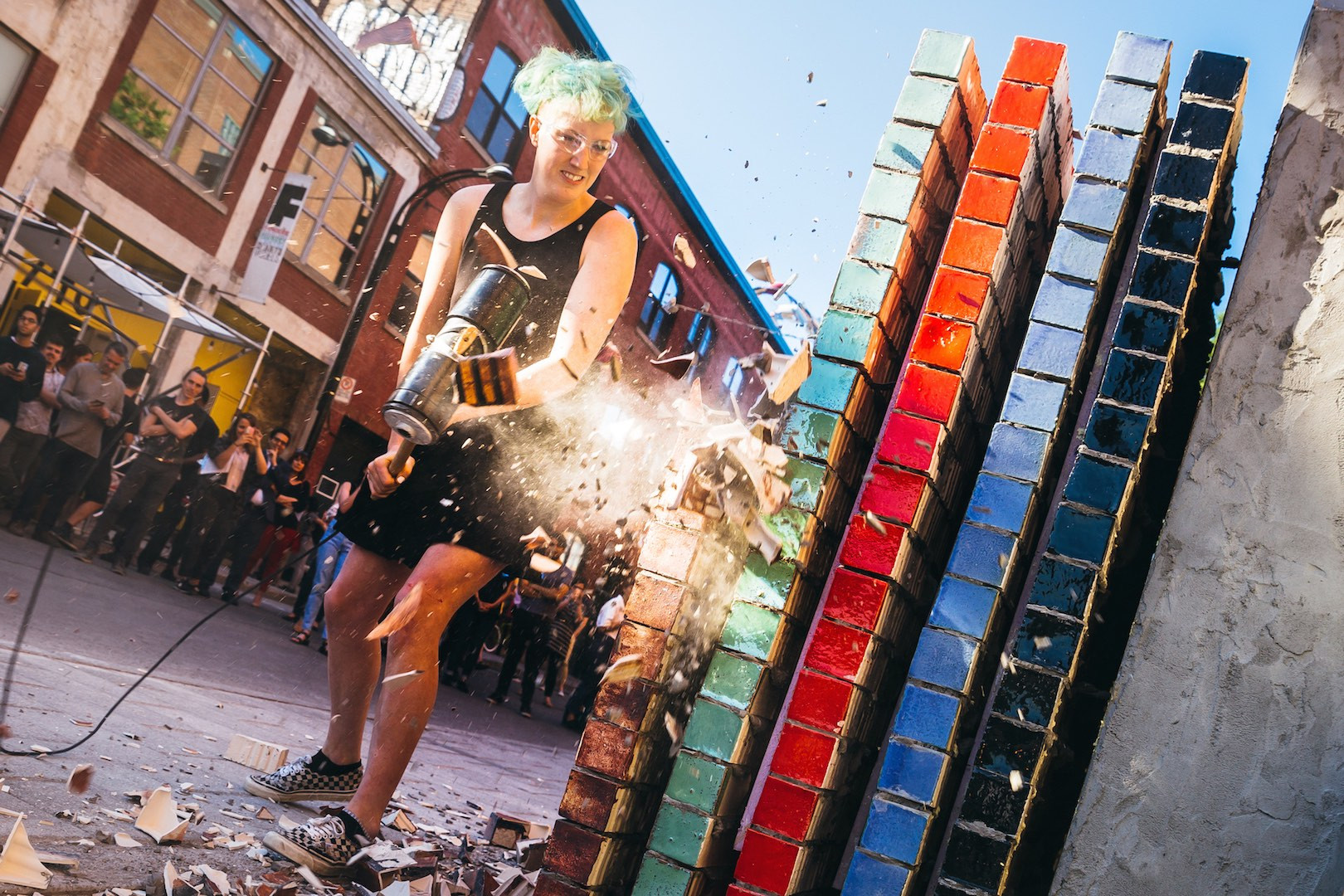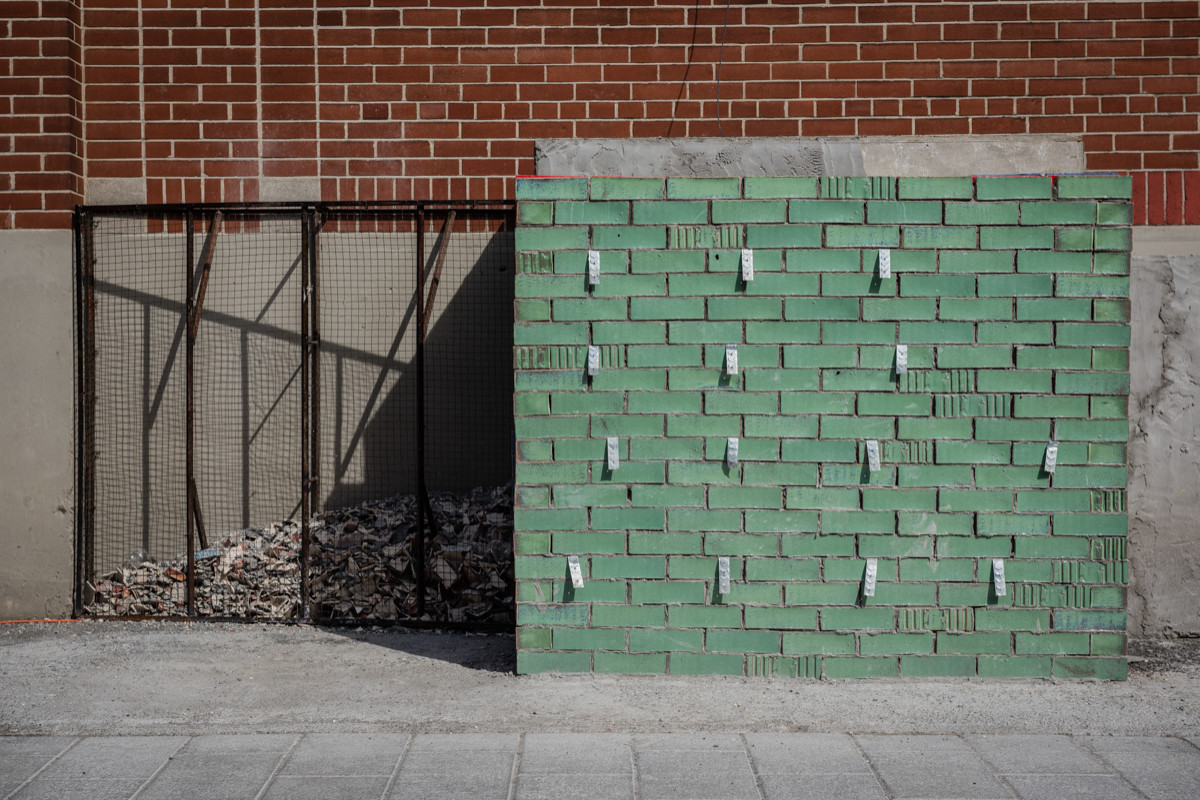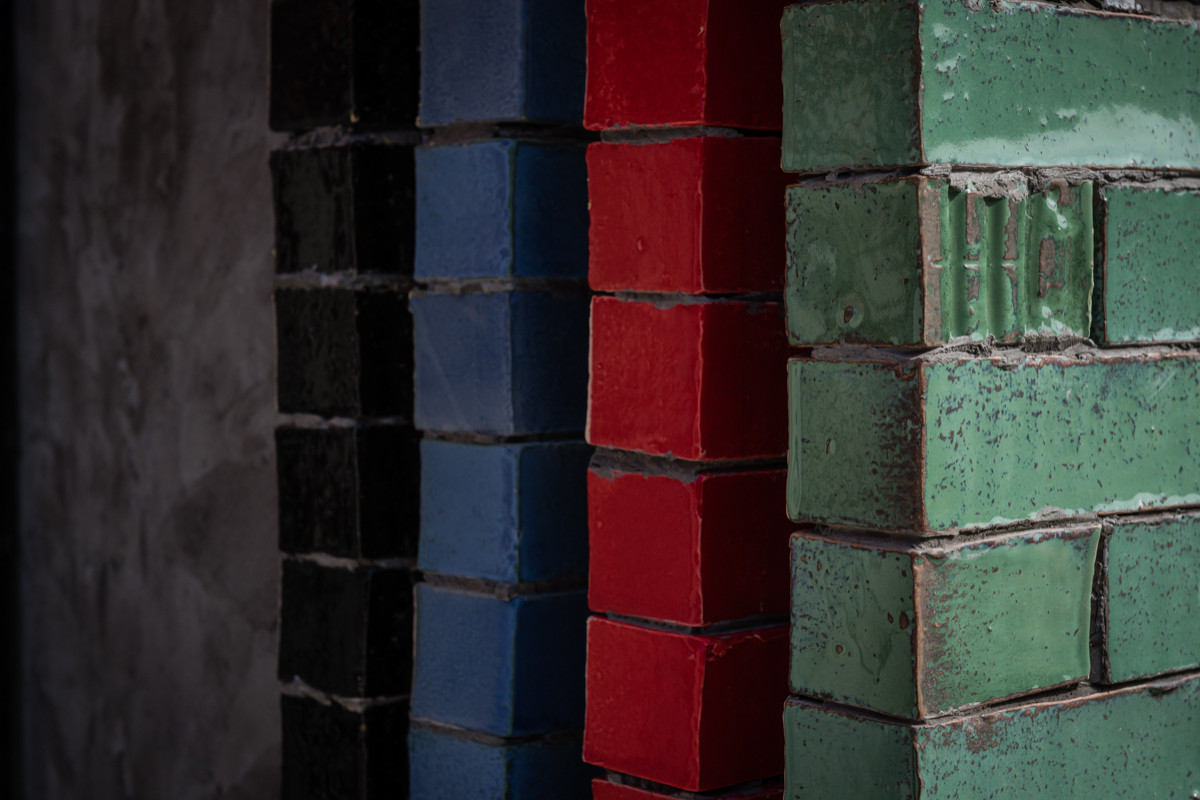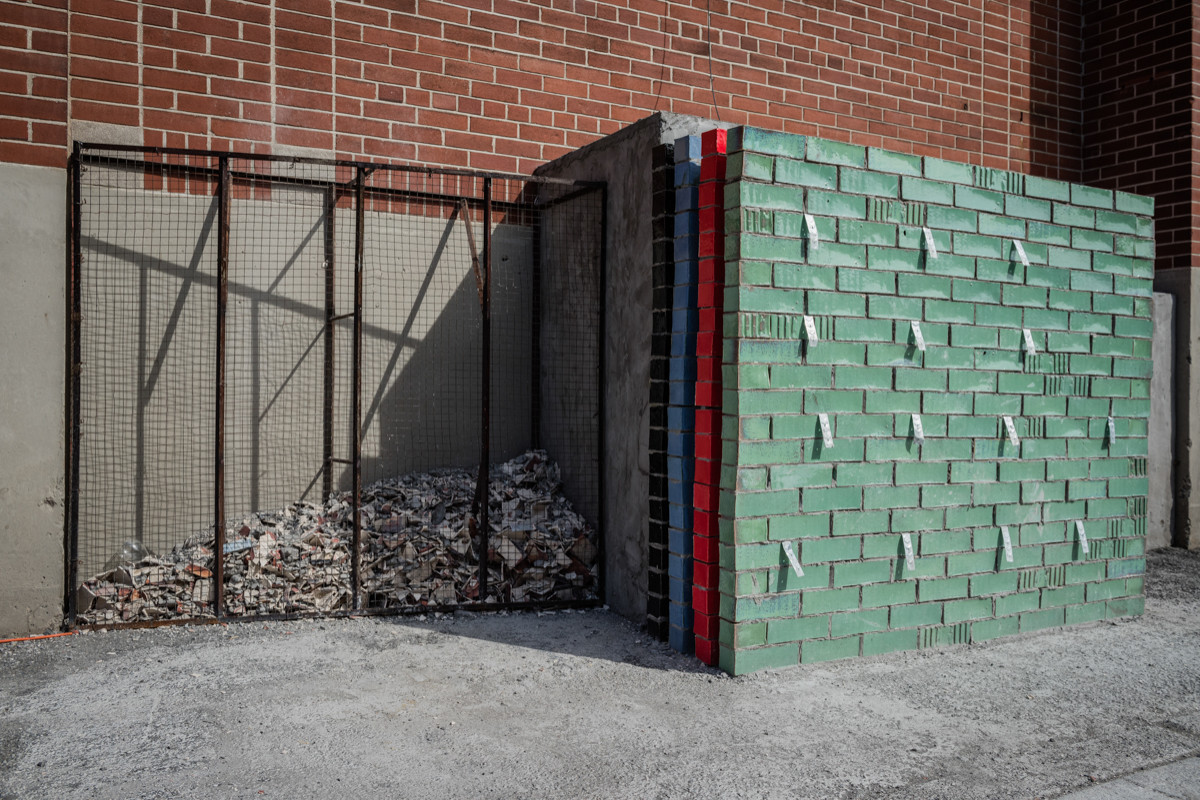





What if the action was an end in itself and not only a means? Conceived by Catherine Landry and Gabriel Lapierre, Générateur spectaculaire comes alive through performances in which the two artists progressively destroy the result of their own labour. This performative installation therefore sets up actions that produce nothing but the fact that they have been done, in a way similar to the demolition/construction due to gentrification, which has been a major issue for the Darling Foundry.
Located on the southwest side of Ottawa street, along the Hydro-Québec building, Générateur spectaculaire is a cube of 5 small brick walls, each of them measuring 5 feet high and 6 feet long. Produced in the exact same way thanks to a mould of plaster and liquid clay, these hollow bricks distinguish themselves through various glazes characterising every wall, from the application of a red iron oxide to a range of shiny and colourful glazes. On the right side of this cube, a sledgehammer is locked in a box. This sledgehammer is used for the 5 performances, allowing the artists to activate their artwork by destroying it. The sound of the sledgehammer impact is exacerbated by a small microphone linked to an amplifier - thus reinforcing the idea of an explosion. This amplifier is set in a fake concrete wall located between the 5 small walls and the building. A part of this buffer wall is a wire cage in which the artists will collect the debris.
The installation is destroyed by the artists at the pace of one wall per performance throughout the 2018 Place Publique nights. Armed with the sledgehammer-microphone, the artists burst the ceramic bricks and make the amplified sound of the sledgehammer resonate against the wall. Little by little, as the activations are made, the walls collapse, disclosing the various glazes and letting out a less and less muffled sound. At the end of every performance, the debris are placed in a wired cage making visible the evolution of the structure as it changes. As a result, there will be a gradient of debris showing the five different glazes.
What is created by the demolition is the spectacle, the expectation for the liberation of the sound and the aesthetical transformation of urban landscape. All the efforts that have been directed towards producing the bricks only serve this purpose, and demonstrate the absurd link between the means and the end. Paradoxically, once there will be no wall left, there will be nothing else to demolish. Nothing else will produce a sound and there will be no installation left to perform the show. This end will lead to a silent anti-climax around the structure debris. In the end, the artwork will be the evidence of an action whose purpose was only to be done.
The demolition that produces the sound producing the show will only have produced witnesses.
Cécilia Énault
THANK YOU TO THE DONORS OF THE CROWDFUNDING CAMPAIGN WHO MADE THIS PROJECT POSSIBLE

Catherine Landry Gabriel Lapierre
Catherine Landry and Gabriel Lapierre are both students in the baccalauréat en art of the UQÀM École des arts visuels et médiatiques. In the context of a course entitled "Problematique of sculpture: public spaces", dispensed by the artist and professor Stéphane Gilot, they have been able to participate to a contest developed in partnership with the Darling Foundry in order to conceive the semi-permanent artwork that will integrate the Place Publique during summer 2018. Throughout the 2017-2018 school year, all of the students of this course were able to conceptualize, develop and defend their projects in front of the class, and then in front of an external jury of specialists. During the jury examination, students have presented the concept, the model, the samples and the budget of their projects. The winners Catherine Landry and Gabriel Lapierre benefit thus from a logistical and financial support by the Darling Foundry to produce their Générateur Spectaculaire.
Catherine Landry
The recurring themes of Catherine's creation are related to gender stereotypes in today's society. She criticizes the popular culture that maintains problematic statements and contributes to creating a collective imaginary which is harmful to many marginalized communities. By using an attractive aesthetic to draw public attention, Catherine leads this one to question. Since she often works with the self-portrait, there is a performative aspect in her video and photographic works. These mediums allow her to create attractive and fantastic environments where she can perform. The male paradigm progressively appears in her research. By working this way, Catherine reverses the domination still present in society to create projects where the man is objectified by her artistic point of view. She also works with silver photography and craft techniques. Through pottery, Catherine questions the place of minor arts, traditionally done by women in the institutionalized artistic environment.
Gabriel Lapierre
Gabriel mainly works on the idea of perception reappropriation. Among others, he uses systems inspired by Western occult traditions (sigils, tarot, alchemy, talismans...) and is also interested in theories about located points of view and by the placebo effect. Gabriel tries to provide a work with political implications closely tied with his lifestyle. He has been performing on the musical stage of punk and underground folk in Quebec and in the North of the U.S for more than six years.
Curator
Cécilia Enault
